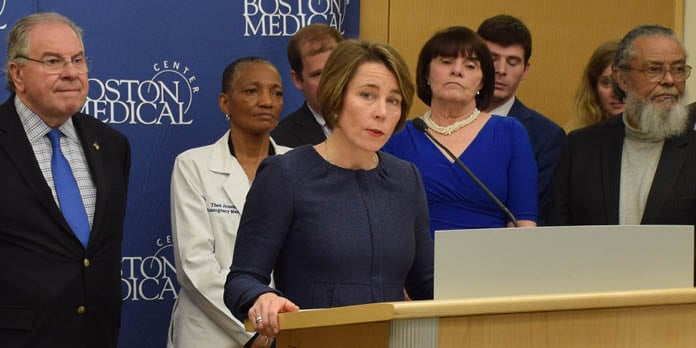
A firestorm of controversy has greeted the Berkshire Museum‘s decision to sell some 40 works from its collection at Sotheby’s. The uproar has not gone unnoticed: A spokesperson for the Massachusetts attorney general’s office has confirmed to artnet News that it is “reviewing the transaction for how it comports with applicable charities law.”
The spokesperson declined to say when the review had started, or give further details. (The attorney general’s review was first made public on Twitter by Los Angeles Times art critic Christopher Knight, who has been a vocal opponent of the Berkshire’s move.)
The planned auctions include two paintings by Norman Rockwell that the artist personally donated to the museum: Shuffleton’s Barbershop (1959) and Shaftsbury Blacksmith Shop (1966). The sales would take place in auctions spanning six months beginning in November.
Norman Rockwell, Shaftsbury Blacksmith Shop. Courtesy Berkshire Fine Arts.
The museum board claims the sales are necessary to bolster the institution’s endowment and secure its future, saying that the move is intended to avoid a financial crisis that might force it to close in six to eight years. An estimated $40 million, or most of the proceeds, would be directed to an endowment now valued at roughly $8.6 million.
In a post yesterday, financial journalist Felix Salmon wrote that the Berkshire Museum’s last major deaccessioning was in 2008 when it raised $7 million for something titled the “Keep Crane Fund,” named for museum founder Zenas Crane. Under guidelines of the American Association of Museums (AAM) and the Association of Art Museum Directors (AAMD), institutions are only permitted to sell art when the funds raised are put towards further acquisitions.
Norman Rockwell, Shuffleton’s Barbershop (1959). Courtesy Berkshire Fine Arts.
However, Salmon writes, the Keep Crane Fund has had a very different purpose:
[B]etween its foundation and mid-2016, it transferred a total of $3,405,290 to help fund the museum’s operations. Some of that money went to new commissions, most notably windows for the entranceway by glass artist Tom Patti. But it looks like most of that money has simply been used to fund the operating budget, which was not the original intent. The fund stood at $6.3 million as of mid-2016; it looks very much like it’s being treated like an endowment, throwing off $360,000 or more every year, and being invested so as to try to maintain its value over time.
A previous report in the Berkshire Eagle had questioned whether the museum would be hit with a hefty penalty by Sotheby’s were it to withdraw the consignment now.
Update, August 30: Berkshire Museum legal counsel Mark Gold said in an email to artnet News: “Although no notice was legally required, the museum advised the Office of the Attorney General of the anticipated deaccessioning and sale on June 22, 2017. The Attorney General’s office does not second guess the decisions of boards of trustees, but it is appropriate for the office to look at how the board discharged its fiduciary duty in making the decision it did. The office is also vested with ensuring that the museum is correct that there are no restrictions on the objects to be sold. The museum has sent the Attorney General’s office documentation, as requested, to assist in that process.”